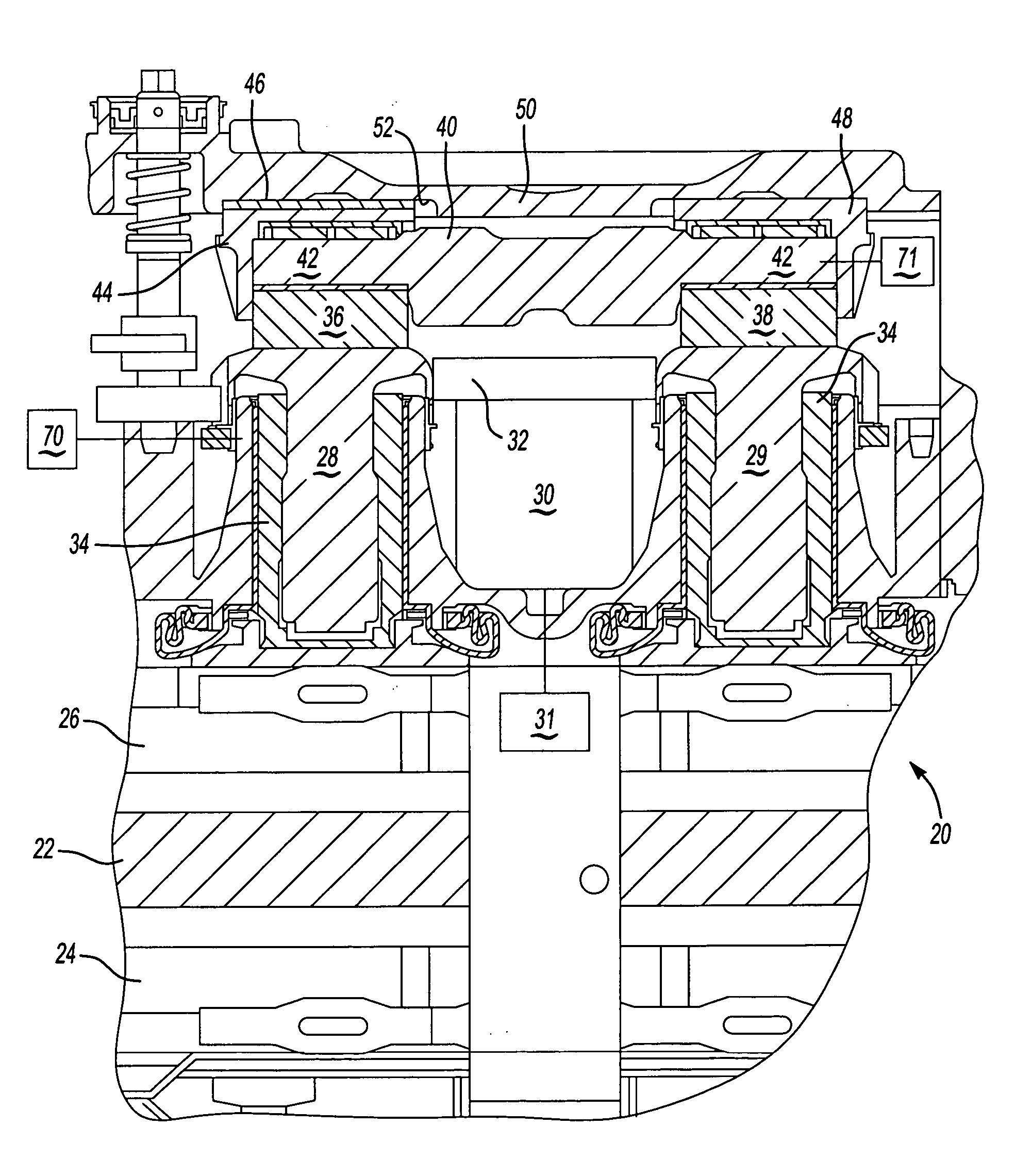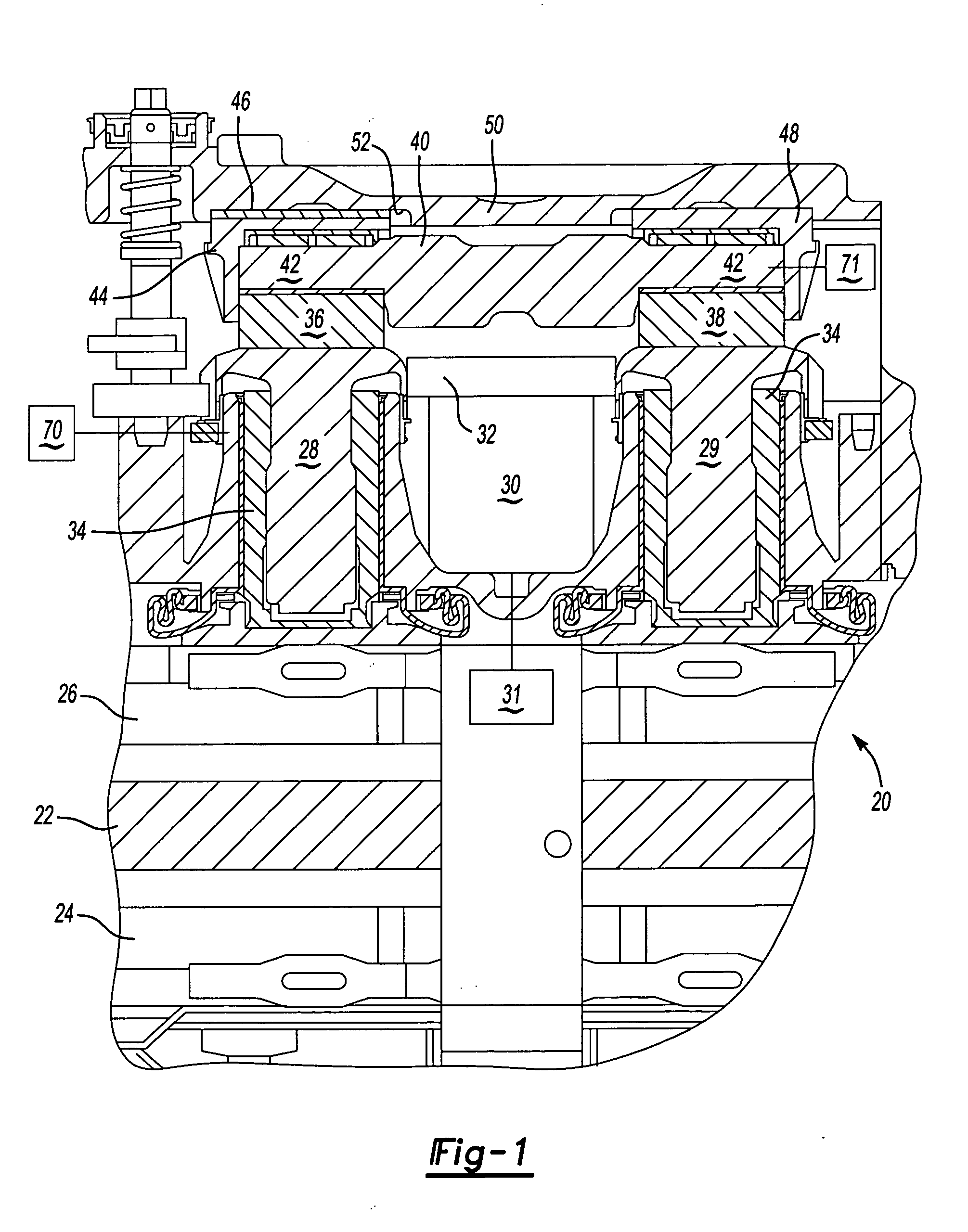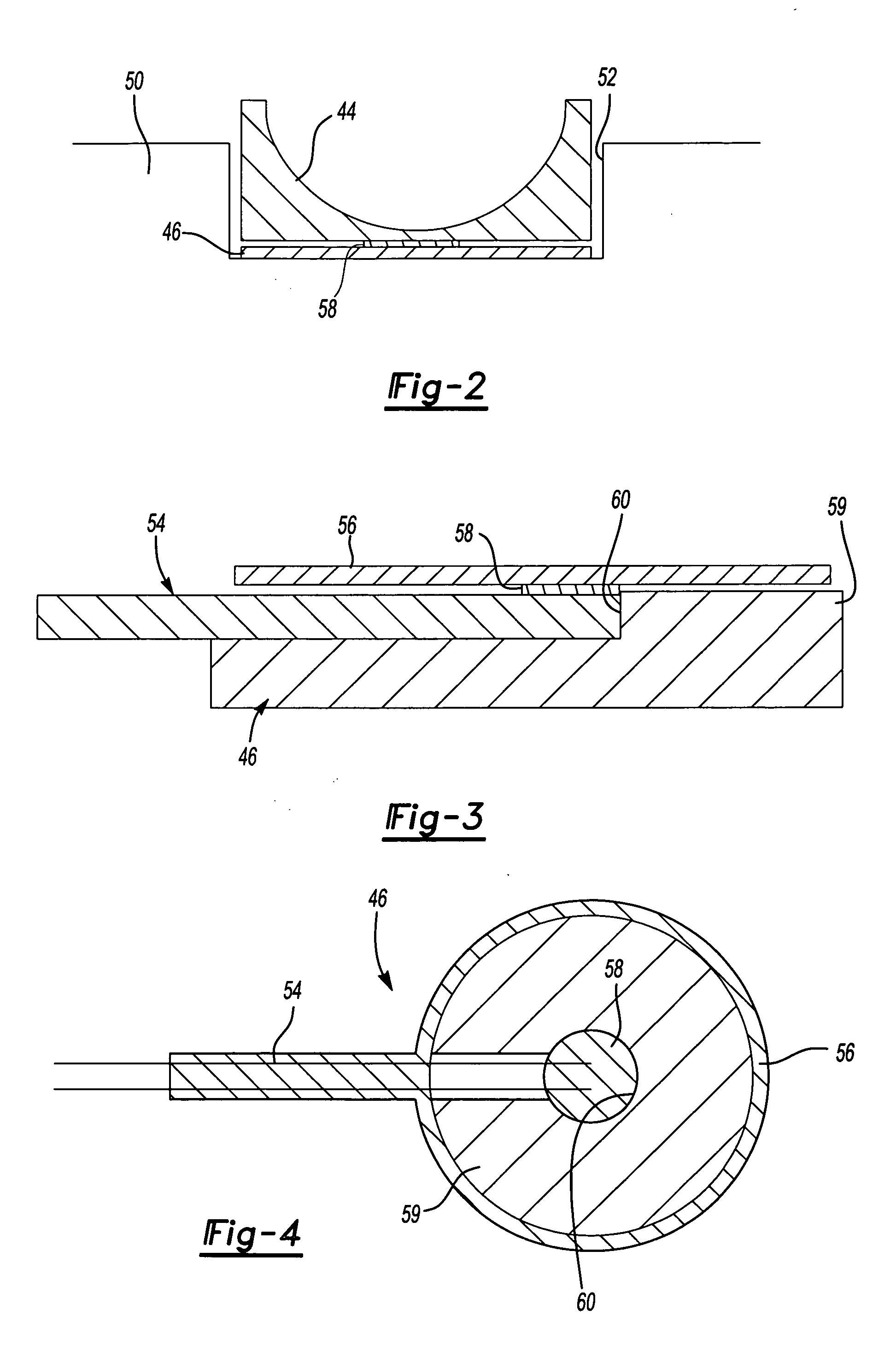Force sensor for vehicle brake application
a technology of force sensor and vehicle brake, which is applied in the direction of mechanical equipment, braking systems, transportation and packaging, etc., can solve the problems of little available space along the transmission path, no practical application or location for placing a force sensor has been identified in the disc brake environment, and the effect of reducing the current flow of electric resistan
- Summary
- Abstract
- Description
- Claims
- Application Information
AI Technical Summary
Benefits of technology
Problems solved by technology
Method used
Image
Examples
Embodiment Construction
[0017] Disc brake 20 is illustrated in FIG. 1 having an actuator shaft 40, as known. A brake pad 26 is driven toward a rotor 22 that is to be braked by the disc brake 20. A pair of actuator pistons 34 drive the brake pad 26 toward rotor 22 upon control of the actuator shaft 40 as explained below. As known, an opposed brake pad 24 is also brought into contact with rotor 22.
[0018] As known, the position of the pistons 34 should be adjusted toward the item to be braked, or downwardly as shown in FIG. 1, with wear on the brake pads 24 and 26. Thus, it is known to have tappet gears 28 and 29 for providing adjustment. Historically, this adjustment has been mechanical. However, more recently, this adjustment has been provided by utilizing an electric motor. Elector motor 30 is illustrated schematically in FIG. 1 driving a gear 32 to drive tappet gears 28 and 29. Such an arrangement is shown, for example in U.S. Pat. No. 6,293,370.
[0019] As can be appreciated, pistons 34 have internally t...
PUM
 Login to View More
Login to View More Abstract
Description
Claims
Application Information
 Login to View More
Login to View More - R&D
- Intellectual Property
- Life Sciences
- Materials
- Tech Scout
- Unparalleled Data Quality
- Higher Quality Content
- 60% Fewer Hallucinations
Browse by: Latest US Patents, China's latest patents, Technical Efficacy Thesaurus, Application Domain, Technology Topic, Popular Technical Reports.
© 2025 PatSnap. All rights reserved.Legal|Privacy policy|Modern Slavery Act Transparency Statement|Sitemap|About US| Contact US: help@patsnap.com



